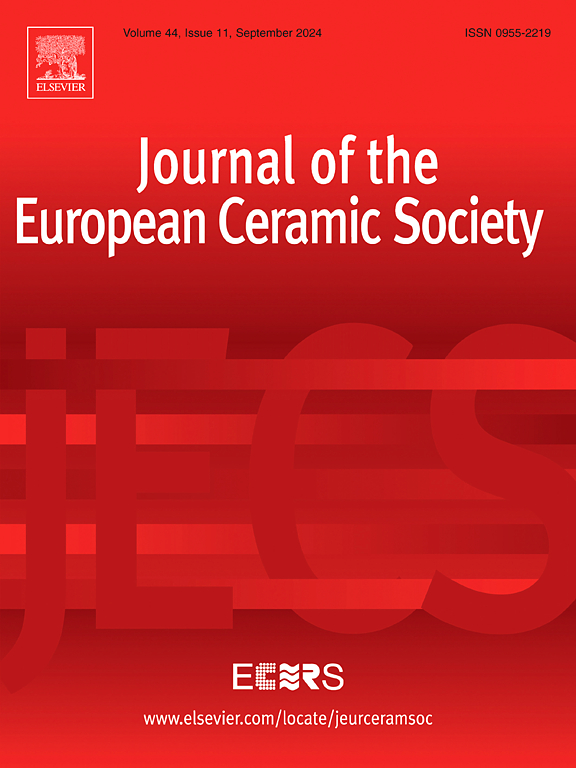Multi-mechanism cooperative optimization of electromagnetic shielding and mechanical properties in Cf/PyC/SiC-SiCN(Fe) ceramic-based composites
IF 5.8
2区 材料科学
Q1 MATERIALS SCIENCE, CERAMICS
Journal of The European Ceramic Society
Pub Date : 2025-02-19
DOI:10.1016/j.jeurceramsoc.2025.117302
引用次数: 0
Abstract
Heterogeneous interfaces greatly impact material electromagnetics, but combining structural design, interface regulation, and magnetic enhancement remains challenging. This study synthesizes a carbon fiber-reinforced metal-containing silicon carbonitride (Cf/PyC/SiC-SiCN(Fe)) composite by incorporating multilayer interfaces and magnetic particles. The research reveals that the existence of multiphase heterogeneous interfaces produces a plethora of lattice defects and amplifies polarization effects, thereby enhancing electromagnetic shielding performance. The addition of carbon fibers augments conductive loss, while magnetic particles contribute to magnetic loss. Their combined effect results in an impressive shielding effectiveness of 62.1 dB in the 8–12 GHz band and 38.6 dB in the 12–18 GHz band. Furthermore, the carbon fiber and double-layer interface structure provide robust mechanical support for the composite, with a strength reaching 444.8 ± 20.9 MPa. These findings illustrate that through meticulous interface design and structural optimization, the composite achieves excellent electromagnetic shielding and mechanical properties at low density, indicating wide potential applications.
求助全文
约1分钟内获得全文
求助全文
来源期刊

Journal of The European Ceramic Society
工程技术-材料科学:硅酸盐
CiteScore
10.70
自引率
12.30%
发文量
863
审稿时长
35 days
期刊介绍:
The Journal of the European Ceramic Society publishes the results of original research and reviews relating to ceramic materials. Papers of either an experimental or theoretical character will be welcomed on a fully international basis. The emphasis is on novel generic science concerning the relationships between processing, microstructure and properties of polycrystalline ceramics consolidated at high temperature. Papers may relate to any of the conventional categories of ceramic: structural, functional, traditional or composite. The central objective is to sustain a high standard of research quality by means of appropriate reviewing procedures.
 求助内容:
求助内容: 应助结果提醒方式:
应助结果提醒方式:


